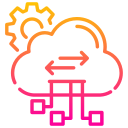Global Delivery: CDNs, Edge, and Resilience for Updates
Distribute app updates and large assets through edge nodes near your users. The cloud shortens round trips, reduces packet loss, and improves perceived speed. On launch day, pre-warmed caches keep downloads snappy, preventing the all-too-familiar surge that slows everything down when interest peaks suddenly.
Global Delivery: CDNs, Edge, and Resilience for Updates
Ship only the differences between versions instead of full packages. Cloud tooling computes efficient binary diffs, dramatically shrinking update sizes. Users on metered connections appreciate the savings, and your app feels considerate rather than demanding—an impression that quietly earns loyalty over countless small interactions.









